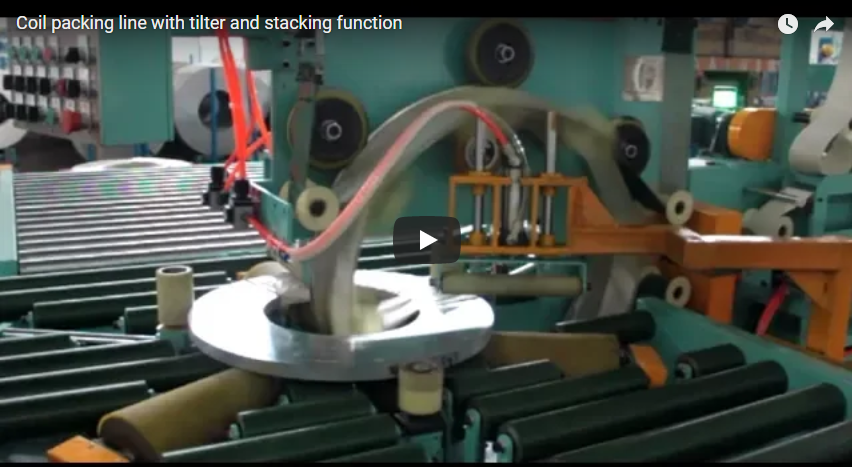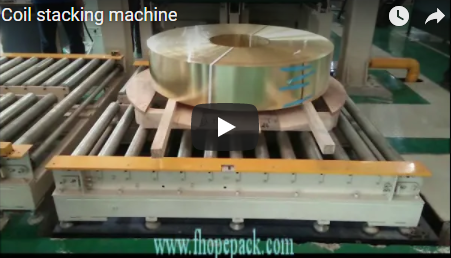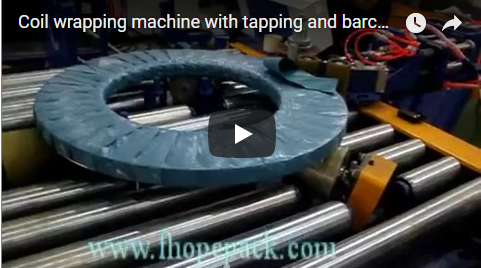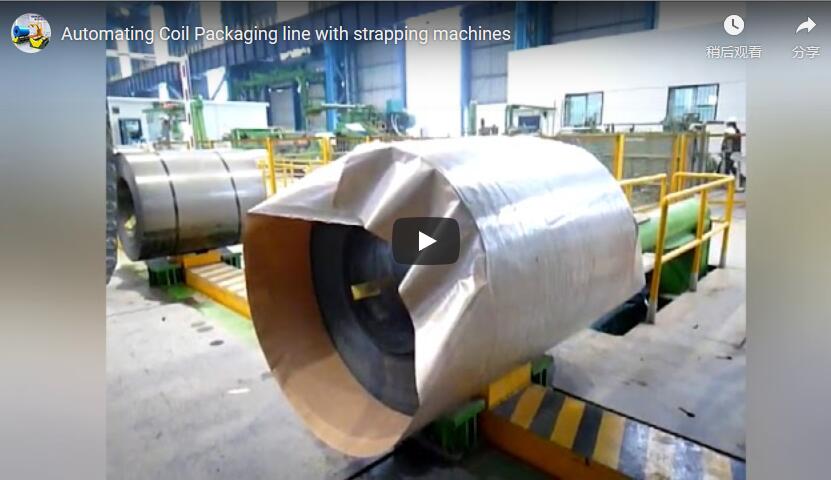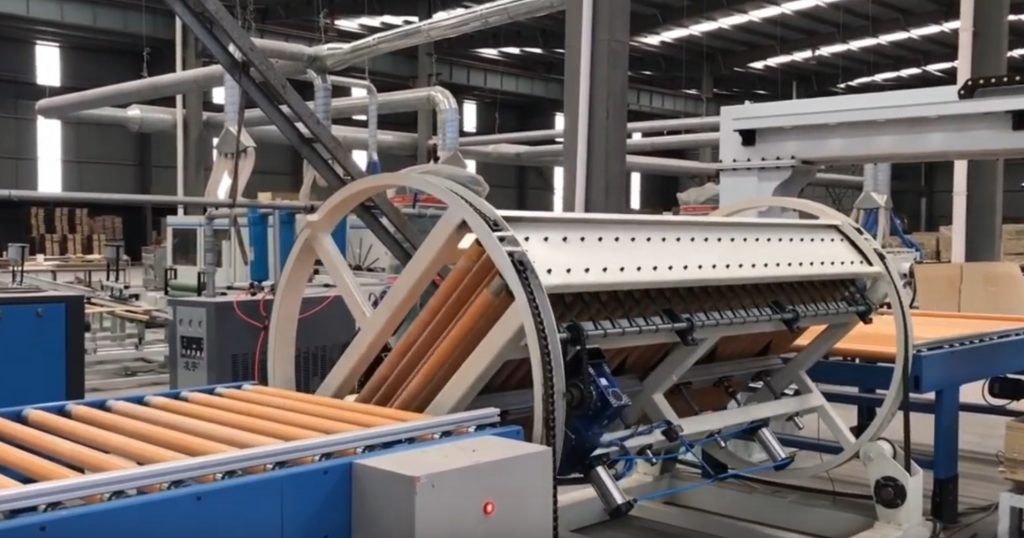The secure and efficient handling of steel coils is paramount in industries ranging from steel mills and service centers to automotive manufacturing and construction. Proper packaging, particularly strapping, is critical not only for protecting the coil during transport and storage but also for ensuring the safety of personnel and the integrity of automated handling systems. The video above showcases an Automatic Steel Coil Strapping Machine designed specifically for circumferential strapping, a key operation within integrated coil packing lines. This article delves into the technical specifications, operational benefits, and integration considerations of such automated systems.
1. The Need for Automation in Steel Coil Strapping
Manual or semi-automatic strapping of heavy steel coils presents several challenges:
- Safety Risks: Handling heavy strapping tools and working around large, potentially unstable coils poses significant ergonomic and safety hazards.
- Inconsistency: Manual application can lead to variations in strap tension and placement, potentially compromising load security.
- Speed Limitations: Manual processes often create bottlenecks in high-volume production environments.
- Labor Costs: Dedicated personnel are required for a repetitive and physically demanding task.
Automated strapping machines directly address these issues, offering enhanced safety, consistent quality, higher throughput, and optimized labor utilization within the steel coil packing line.
2. Core Functionality: Circumferential Strapping Explained
Circumferential strapping involves applying straps around the curved circumference (or "belly") of the steel coil. This method is crucial for maintaining the coil's tightly wound structure, preventing edge damage, and ensuring stability during subsequent handling, storage, and transport. The machine automatically feeds the strap around the coil, tensions it to a pre-set level, seals the strap (typically via friction-weld for PET or mechanical seal for steel), and cuts it, completing the cycle efficiently and reliably.
3. Key Technical Specifications & Design Considerations
When evaluating automatic steel coil strapping machines, several technical parameters are critical. Below is a typical specification range, though specific values vary by manufacturer and model:
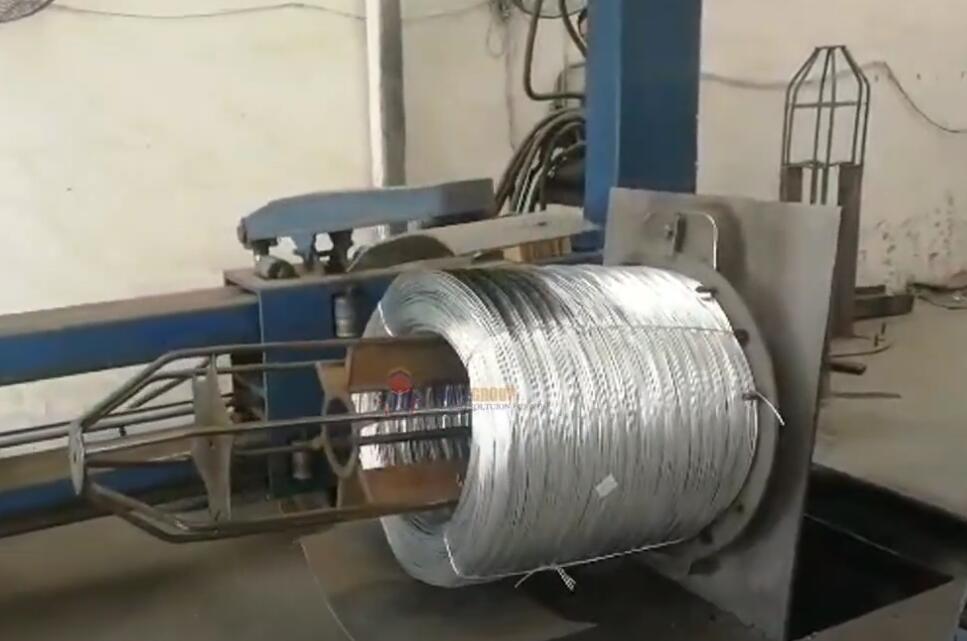
- Coil Handling Capacity:
- Coil Inner Diameter (ID): Typically 508 mm (20") to 760 mm (30")
- Coil Outer Diameter (OD): Up to 2100 mm (82.7")
- Coil Width: 500 mm (19.7") to 2000 mm (78.7")
- Coil Weight: Up to 30,000 kg (66,000 lbs) or higher
- Strapping Parameters:
- Strapping Material: Polyester (PET) or Steel strapping
- Strap Width: 16 mm (5/8"), 19 mm (3/4"), 25 mm (1"), 32 mm (1 1/4")
- Strap Thickness: PET: 0.8 mm - 1.27 mm; Steel: 0.8 mm - 1.0 mm
- Strapping Speed: Typically 15-30 seconds per strap cycle (depending on coil size and strapping head)
- Tension Range: Adjustable, up to 15,000 N or higher for PET, significantly higher for steel systems.
- Machine & Control:
- Control System: PLC-based (e.g., Siemens, Allen-Bradley) with HMI touchscreen interface.
- Power Requirements: 480V/3Ph/60Hz or specified local standard.
- Pneumatic Requirements: If applicable (typically 6-8 bar).
Design Features: Robust, heavy-duty frame construction is essential to withstand the industrial environment. Key design elements include easy access for maintenance, integrated safety guarding (fencing, light curtains, emergency stops), and modularity for potential future upgrades or integration.
4. A Closer Look at Critical Components
Understanding the core components provides insight into the machine's operation and reliability:
- Strapping Head: The heart of the machine. Responsible for feeding, tensioning, sealing (friction-weld for PET, notch/seal for steel), and cutting the strap. High-performance heads are designed for durability and minimal maintenance.
- Strap Dispenser: Holds the strap coil and ensures controlled, tangle-free feeding to the strapping head. Often includes features for automatic loading or large jumbo coil capacity.
- Strap Chute/Arch: Guides the strap accurately around the coil circumference. Must be robust and designed to handle the specified coil range.
- Conveyor System: Often integrated, this transports the coil into and out of the strapping station, ensuring precise positioning for accurate strap placement. Can include roller conveyors, chain conveyors, or walking beams depending on the application.
- Control Panel (HMI): Allows operators to set parameters (tension, number of straps, strap positions), monitor machine status, and troubleshoot issues. Provides interface for integration with line control systems.
- Safety Systems: Essential for personnel protection. Includes physical guarding, interlocked access doors, light curtains at entry/exit points, and strategically placed emergency stop buttons.
5. Operational Advantages and User Experience

Implementing an automatic circumferential strapping machine yields significant benefits:
- Increased Throughput: Dramatically faster cycle times compared to manual methods, eliminating bottlenecks.
- Consistent Load Security: Precise, repeatable strap tension and placement ensure every coil is secured to specification.
- Reduced Product Damage: Proper containment minimizes the risk of coil telescoping or edge damage during handling.
- Enhanced Worker Safety: Eliminates manual handling of tools and straps around heavy coils, reducing ergonomic strain and accident risk.
- Labor Optimization: Frees up personnel for higher-value tasks.
- Material Savings: Optimized tension control can prevent over-tensioning and potential strap breakage, while precise cutting minimizes waste.
From a user perspective, modern machines offer intuitive touchscreen interfaces for simple operation and parameter adjustments. Diagnostic screens help quickly identify and resolve potential issues, minimizing downtime. Routine maintenance points are typically designed for easy access, simplifying preventative upkeep.
6. Seamless Integration into Coil Packing Lines
This type of strapper rarely works in isolation. It's typically a crucial station within a larger, automated coil packing line which might include:
- Coil Upenders/Downenders
- Weigh Stations
- Eye-to-Sky Banding Stations
- Stretch Wrapping Machines
- Labeling Systems
- Palletizing or Stacking Systems
Effective integration requires seamless communication between machines. PLCs communicate via protocols like Ethernet/IP or Profinet, ensuring coils flow smoothly from one process to the next, tracking data, and optimizing overall line efficiency. The strapper must receive signals indicating a coil is in position and ready, and send signals upon cycle completion.
7. Selecting the Right Automatic Strapping Solution
Choosing the appropriate machine involves considering several factors:
- Coil Specifications: Match the machine's capacity (size, weight) to your product range.
- Required Throughput: Ensure the machine's cycle speed meets your production demands.
- Strapping Material: Decide between PET (cost-effective, recyclable, no sharp edges) and Steel (highest strength and rigidity). The machine must be configured accordingly.
- Level of Automation: Consider integration needs with existing or planned lines.
- Operating Environment: Factor in temperature, dust, or presence of oils/lubricants.
- Maintenance & Support: Evaluate manufacturer reputation, spare parts availability, and service support.
- Budget: Balance initial investment against long-term operational savings and performance gains.
8. Conclusion: Enhancing Packaging Performance and Safety
Automatic steel coil strapping machines for circumferential applications represent a significant advancement over manual methods. As demonstrated in the video, they deliver substantial improvements in packaging speed, consistency, load security, and operator safety. By carefully evaluating technical specifications, understanding component functions, and considering integration requirements, facilities handling steel coils can implement automated solutions that optimize their packaging operations, protect their products, and contribute to a safer, more efficient workflow.

